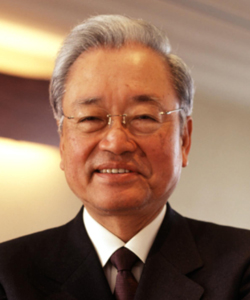
Minoru Mori
“There are but a handful of people one encounters in a lifetime who have the ability to shape the world according to their vision. Minoru Mori was such a person. He saw architecture as a stage where the theatre of life would play out. We hope to honor his legacy of the ‘vertical garden city’ – an urban way of life which combines commerce, culture, and the environment – a vision carried on by the important work of Mori Building and by others he inspired.”
– David Malott, CTBUH Chairman, Principal, KPF.
The late Minoru Mori is considered to have been one of Japan’s most powerful and influential building developers. As a developer, he was best known for influencing the shape Tokyo’s skyline with towering buildings.
Mori’s keystone project was the Roppongi Hills development in Tokyo which opened in 2003, centering on the 54-story Mori Tower. This innovative $4 billion complex effectively transformed a developing neighborhood into one of the city’s most coveted business centers. Mr. Mori is also laudable for his attention to the seismic risks involved in building in one of the world’s most earthquake-prone countries, and his pioneering thinking paved the way forward for tall building design in seismic areas.
Mori acknowledged the influence of Le Corbusier in his developments, but believed he surpassed the Swiss architect’s urban designs, particularly in the Roppongi Hills project. Much like Le Corbusier’s aspirations for modern design to improve life in crowded cities, Mori described his developments as “vertical garden cities” that offered housing, office, and retail spaces, complemented by parks.
Minoru Mori is recognized for his contribution to evolving Tokyo’s skyline, and advancing the concept of building tall as a fundamental element of the thriving urban environment.



